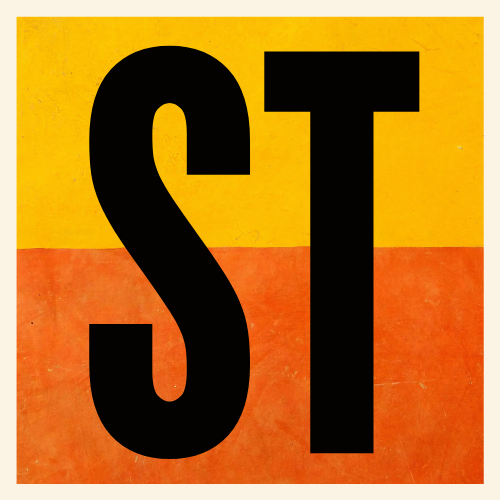The Hidden Frames Behind Every Decision You Make
You’re making decisions all day long, but few people realize the invisible frames shaping every choice. Awareness is your greatest tool.

No one taught you how to decide. Not really. Most of us just picked it up by watching others, fumbling through our own trial and error. But what if you could dramatically improve your decision-making power, not by reading more, but simply by becoming more aware of what’s already happening inside your mind?
Let’s begin with a quote from Napoleon:
“Nothing is more difficult, and therefore more precious, than to be able to decide.”
Decision-making is a hidden skill we all rely on, yet few have ever formally learned.
You’re making them constantly, from what to eat and wear to whether to take the job or quit the relationship. And all those decisions, big or small, quietly compound over time into the story of your life.
If your decisions are consistently solid, the outcome trends toward success. But if your choices lean the other way, rushed, reactive, or misaligned, the consequences pile up just as quickly. That’s why ignoring how you make decisions is not a neutral act. It carries a cost. The good news? Your best defense is awareness.
Please remember that line.
Your best defense is awareness.
If you’re more aware of the situation and how your mind frames it, you’re already halfway to making a better decision.
So let’s talk about one of the most underappreciated levers in decision-making: your frame.

A frame is simply the mental filter you use to interpret a problem. It’s how you simplify and make sense of what’s in front of you. Everyone frames.
We all build these mental structures intentionally or unintentionally to decide what matters and what doesn’t. Think of them as windows. The frame controls what you see, what you overlook, and how you judge what’s outside.
There are three core components of any decision frame.
- First, the boundaries: what you include or exclude when looking at a situation.
- Second, your frame of reference: how you define success or failure.
- And third, your yardstick: the rule or measurement you use to evaluate the outcome.
Let’s start with boundaries.
Here’s a classic example adapted from Daniel Kahneman’s research. Imagine you’ve bought a $50 ticket to a local play. But when you arrive, you realize you’ve lost the ticket. You now have to decide: go home or buy another ticket?

Now, consider a similar situation. You’re heading to the same play, but instead of buying the ticket beforehand, you bring a $50 bill to purchase it at the counter. Upon arriving, you realize you’ve lost the cash. Would you still buy a ticket?

In both cases, you’ve lost $50. But most people respond differently depending on the context.
In the first scenario, they’re more likely to skip the play.
In the second, they’re more willing to pay again. Why?
Because of the mental boundary they’ve drawn. In their minds, the lost ticket feels “inside” the purchase decision, while the lost cash feels “outside.” The boundary you draw shapes what feels rational.
Now let’s look at the second component: frame of reference.
This is the focal point, the benchmark you use to define success. Just as an artist chooses what part of the canvas to highlight, you choose what lens to view your situation through.
I had a friend who wanted to quit his job. He felt that his company had failed its employees during the COVID-19 pandemic. But when I shared data about how many companies had collapsed or furloughed staff during that same period, his perspective shifted.
The new information created a new frame of reference. Sometimes, expanding your viewpoint is all it takes to change your decision.
But be careful. A poor or shallow frame of reference can lead you astray. Just as an artist who chooses the wrong focal point distorts the entire picture, so too does the wrong frame.
The third part of the decision frame is the yardstick.
This is how you measure success, your internal rule of thumb. Let me illustrate how it works through another example, adapted from Richard Thaler at Cornell.
You go to a store to buy a Casio watch for $100. Your partner tells you that the exact same watch is available across the street for $60. Would you walk over to save $40?
Now imagine the same scenario, but you’re buying a 14-terabyte storage device for $1000. Your partner tells you it’s available across the street for $960. Same $40 savings. Would you walk over this time?
Technically, you’re saving the same amount. But your decision often depends on how you’re measuring value.
If your yardstick is percentage-based, 40% off the watch feels significant. But 4% off the hard drive? Not worth the walk. If you think in absolute dollars, it makes no difference. Either way, $40 stays in your pocket.
This is why yardsticks matter. If you don’t consciously choose your measuring tool, someone else will choose it for you, and that opens you up to manipulation.
People will nudge you based on how they frame the offer, the discount, or the urgency.
Let’s pause and reflect on what we’ve uncovered.
Every decision you make is wrapped inside a frame. That frame includes three layers: boundaries, which define what’s inside the problem and what’s out; a frame of reference, which sets your benchmark for comparison; and a yardstick, which measures success or failure.
You don’t have to overanalyze every choice.
But if you pause and check your frame: ask what boundaries you’re assuming, what comparison you’re relying on, and what rule you’re using to judge, you’ll unlock a deeper clarity. And when you’re clear, more options appear. That’s how your decision-making power grows.
So the next time you’re stuck or unsure, remember: you don’t need to be perfect. You just need to be aware.
Your best defense is still awareness.
If you found this article helpful, consider exploring my newsletter, trainings, or Heroic Manifestation courses. We delve deeper into reclaiming your power, aligning your inner compass, and making every choice count.
Let’s create a Heroic Lifestyle,
Sarit Tagore
Creator of Heroic Manifestation™
Connect with me: Website | YouTube | LinkedIn
P.S. If this landed, share it with someone who might need it today. One minute of clarity can shift an entire day.





